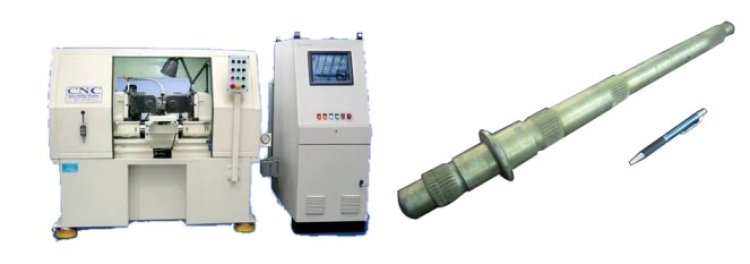Spline Rolling Machine
Spline rolling machine offers several advantages over other methods of producing splines or gears, such as cutting, hobbing, or broaching.
Share this Post to earn Money ( Upto ₹100 per 1000 Views )

Spline rolling machine offers several advantages over other methods of producing splines or gears, such as cutting, hobbing, or broaching. Some of the key benefits include:
1. Higher Efficiency and Speed
• Faster Production: Spline rolling machines operate quickly compared to traditional cutting or broaching methods, which allows for faster production of parts.
• Mass Production: This makes them ideal for high-volume manufacturing, as they can produce large quantities of splined or gear components in a short amount of time.
2. Improved Material Strength
• Cold Working: Spline rolling involves a cold-forming process, which results in a grain flow that enhances the mechanical properties of the material. The process compresses and strengthens the material, improving its fatigue resistance and overall durability.
• Better Surface Integrity: The rolling process typically leads to a better surface finish, reducing the need for secondary operations like polishing or grinding.
3. Cost-Effectiveness
• Reduced Material Waste: Unlike cutting methods that remove material from the workpiece, spline rolling is a form of "net shape" or near-net shape manufacturing, which means there is less material waste.
• Lower Energy Consumption: Spline rolling machines tend to consume less energy than other methods like hobbing or broaching, leading to reduced production costs.
• Tool Life: The tools used in spline rolling (such as rollers or dies) last longer than cutting tools, reducing the frequency of tool replacements and maintenance costs.
4. Precision and Consistency
• High Accuracy: Spline rolling machines provide a high level of precision, ensuring consistent spline profiles with minimal variation between parts.
• Tighter Tolerances: The process can produce splines with tighter tolerances, which is critical for parts that need to fit together precisely, such as in power transmission components.

















